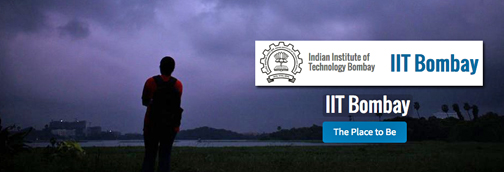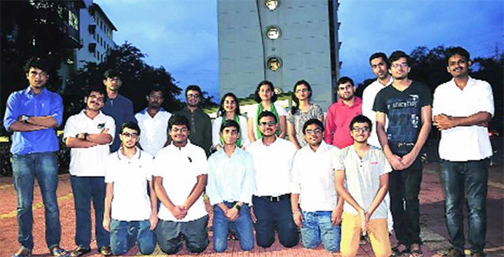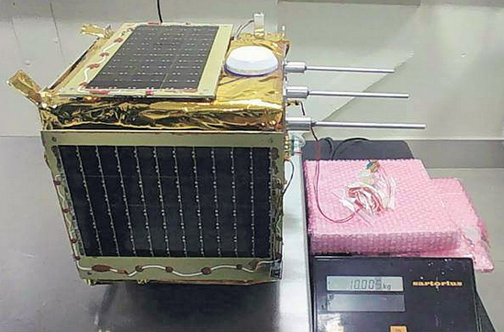
A news story appearing in The Indian Express written by Priyanka Sahoo is reporting that, after a delay of almost eight years, the satellite Pratham will be launched this year, fulfilling a dream that has been an active project for at least seven batches of students at the Indian Institute of Technology, Bombay (IIT-B).

Photo of the satellite project team members. Photo is courtesy of the Pratham team members.
Six students are currently working on the pre-launch of Pratham, which is the institute's first student satellite and which will be launched as a piggyback with the ISRO’s ScatSat PSLV rocket. The students have been given a deadline to be ready by September 26. The satellite, with dimensions 30.5x33.5x46.6 cm and weighing around 10 kg, will measure the total electron count of the ionosphere.
The satellite was conceptualized by two students of the Aerospace Engineering department—Saptarshi Bandyopadhyay and Shashank Tamaskar — in July of 2007. A Memorandum of Understanding was signed with ISRO in September 2009 and later extended in 2014. At present, the team is comprised of 30 students, of whom nine form the core team. As the satellite prepares for launch, the team waits with bated breath. Manvi Dhawan, one of the two project managers has spent more than three years on the project, even after graduating this year. Ratnesh Mishra, the other Project Manager, is already at ISAC Bangalore.

The Pratham satellite developed by IIT-B students. Photo is courtesy of the Pratham team.
“The satellite has performed well in all the tests. We are now waiting for the moment when the PSLV will lift off with it,” said Manvi. “Of course, we are nervous about things that can not be in our control,” she added.
The plan is to spread awareness among students about aerospace engineering and satellite data will be transmitted to any university with a small ground station. Currently, 15 Indian universities are setting up their own ground stations. Atharva College in Mumbai already has one.
“Apart from detecting the exact GPS location, Pratham will also help predict tsunamis,” said Sumit Jain, another core team member and a fourth-year Mechanical Engineering student.
Yash Sanghvi, a fourth-year student of an integrated MTech in Mechanical Engineering course, said Tuesdays and Fridays were dedicated to team meetings, where they would take stock of the week’s work and set future deadlines. “After our regular classes, we would meet at the lab around 8pm and work till 2:00 a.m.,” he said.
ISRO has not only provided the students with facilities for testing—the agency will also bear the expenses of the launch. “The scientists at ISRO understandably work on a zero-error policy. So we, too, were expected to work with precision,” said Harshad Jalan, the youngest member of the team. “There were times when after spending around 30 hours at a stretch in the ISRO lab, we would have only an hour to solve a problem,” said Harshad, a third year Metallurgical Engineering student.
Another challenge was the dynamic nature of the team. “Team members changed every semester,” said Manvi. Every bit of the work had to be documented so it could be passed on to new members. “We recruited members through a written test and an interview. Teams were assigned parts of the satellite work. The best performers were then inducted to the core team,” said Manvi. The experience came with a bounty of learning. “We have leanred how to work within deadlines,” said Yash. The first-hand mentoring from ISRO scientists was a privilege too, he said.
Hemendra Arya, the professor mentoring the team, said, “Watching the students present their case and convince the ISRO scientists during the review meetings, I felt extremely proud.” According to Arya, Pratham’s success depends on three factors— 90 percent depended on ISRO’s approval, five percent has been assigned to the data collected by the satellite and the remaining five percent depends on whether the satellite lives up to an expected life cycle of four months.


